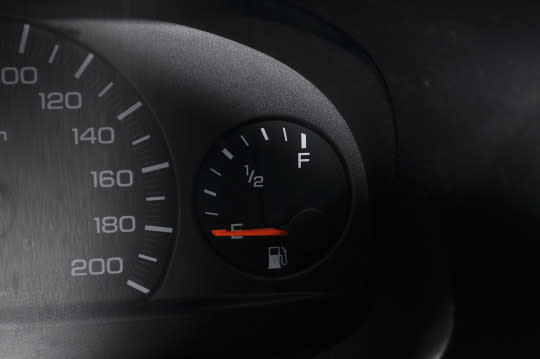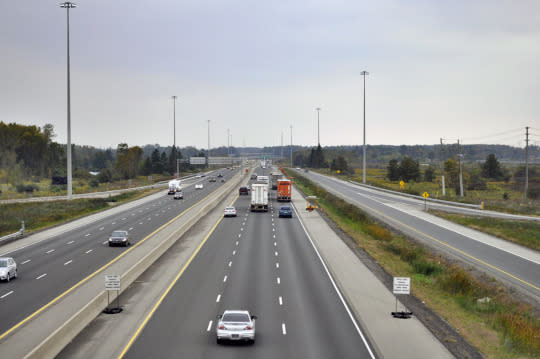Question of the Day: How far can you drive on E?

It’s easy to estimate how far your car will go even after the fuel gauge says it’s empty.
Question: How far can you drive in an average car once the fuel gauge reaches E?
Answer: Some people – like hypermiler Wayne Gerdes – aren’t worried at all when their gas gauge reads “E”. The rest of us, however, should be more concerned.
Of course there are many factors that will determine how far you can go after hitting empty: The car’s fuel efficiency; weather conditions; terrain; and driving habits. But in a General Motors car, which includes Buick, Chevrolet and Cadillac, there’s typically about 8 percent of a full tank left when the gauge hits center-line empty, said Gordon McAllister, a system engineer for quantity indication.
GM rigorously tests gas-gauge parts to be sure they meet required tolerances. However, if those gas-tank components that help measure the fuel level – items such as a float arm, resistors and sensors – come in on the lower side of the allowed tolerances, there’s a chance that there’s even less gas available than that typical 8-percent level, he said.

So how far can you go in on empty? Well, if you know the gas mileage your GM car gets and how much gas your tank holds, you don’t have to be Dr. Michio Kaku to figure it out. Multiply the total tank capacity by .08, then multiply that answer by the miles per gallon you car achieves.
There’s another way to estimate it. At the risk of sounding like Captain Obvious, fill up right away when your warning light goes on and note how much gas it takes to fill the tank. Then subtract that from the total tank capacity; the answer tells you how many gallons are left when the light goes on. If you multiply that by the miles per gallon your car gets, you’ll have a general idea.
Or if math’s not your thing, you could hop on the Internet and go the website http://www.tankonempty.com and hope to find your car listed there. (Warning: The data displayed is crowdsourced, so mileage may vary.)
Some people post that there’s always more gas in the tank than the gauge indicates. McAllister politely disagrees, noting that GM has no interest in gas-gauge inaccuracy. “We always want to protect the consumer,” he says. “We’d never want to indicate more fuel than what’s in the vehicle. It’s a safety issue that we take very seriously.”

“When the low-fuel warning light goes on, we’re telling you it’s time to fill up,” he adds. “We don’t want to put you in situation where you can’t make it to the next fueling station. And if you wait until you’re on center-line E, then you could potentially put yourself in an unsafe situation.”
One more note: Consistently running on empty sometimes can affect the longevity of a car’s fuel pump, which is usually located in the gas tank. How does that work? The fuel that surrounds the pump cools it. Running on empty runs the risk of breaking it.
The bottom line? Don’t emulate Kramer in this classic Seinfeld episode. Instead, fill up when the warning light goes on and keep range anxiety at bay.
We’re scouring the Internet to uncover interesting questions that people have posted looking for advice from the unwashed masses. We will contact experts to give you well-researched, professional advice. You can also submit questions to autos_qotd@yahoo.com.

 Yahoo Autos
Yahoo Autos 